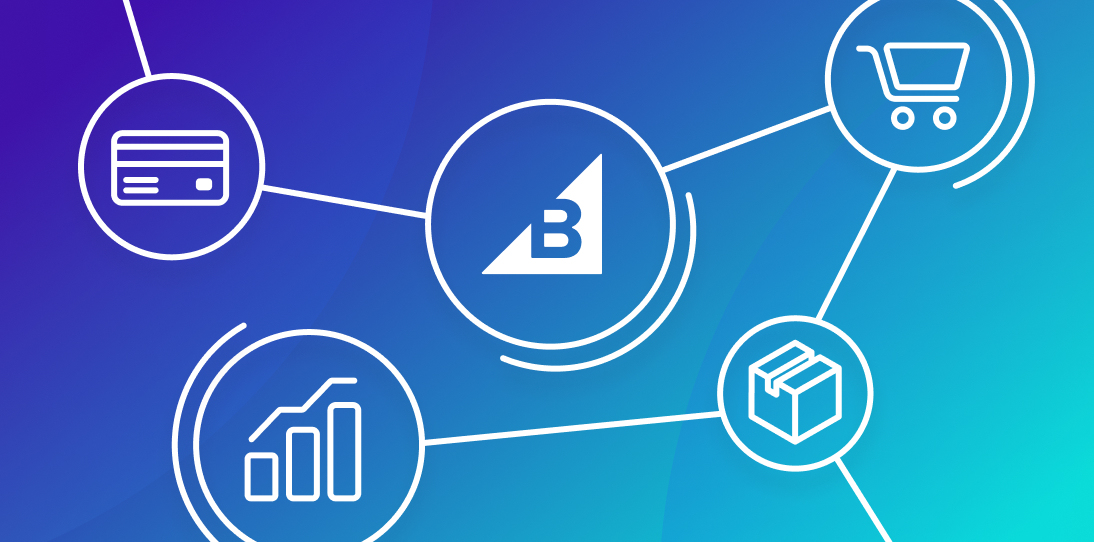- Enterprise
- Essentials
Ecommerce Integrations Bring the Best of All Worlds Into Online Stores

Learn more about our modern, flexible ecommerce platform.
You can have the greatest starting five in the history of basketball, with Hall of Famers at every position. If they don’t work as a team, though, all you have is dysfunction.
That’s the dilemma facing ecommerce businesses looking to integrate multiple systems into — ideally — one cohesive platform. It can be a complicated process that takes months, or even years, to complete.
However, a well-integrated system leveraging best-in-class solutions is the best path to providing a superior customer experience.
In 2022, the average checkout completion rate was 46.1%. The top 10% of performers were pushing 70%. The difference between completing a sale and not is often friction built in the purchase path.
Seamlessly integrating the best solutions at every step of the customer journey is going to increase completion and conversion rates and positively impact revenue.
Why Ecommerce Integrations Matter for Enterprise Businesses
Robust and well-executed integrations and plugins are quickly becoming must-haves for ecommerce companies. The ability to streamline operations, provide an enhanced customer experience and sell across channels is too much to pass on.
Streamlines operations.
Integrating enterprise apps such as inventory management, customer relationship management (CRM) and enterprise resource planning (ERP) means a seamless flow of data.
Manual operations, like data entry, are removed and automation ensures operational efficiency, reduces errors and saves time and resources.
Increases efficiency.
As mentioned above, manual operations slows processes. It can cause human errors that have to be corrected and slows processes. Something like a fully integrated automated logistics system will ease staff burdens and ensure that tasks get done when they most need to get done.
Minimizes unnecessary data redundancy and errors.
Unnecessary data is a burden and can lead to outdated or inaccurate information. Data that is up-to-date means good decisions are made and inconsistencies are avoided.
Improves customer experience.
Customers are increasingly expecting a personalized experience in their ecommerce store, which is most often done through third-party solutions.
Integrating these tools means customers get an experience tailored to their interests — which means they’re being shown products they’re more likely to purchase.
Composable Commerce and Ecommerce Integrations
Composable commerce is an emerging approach to building ecommerce systems that emphasizes flexibility and agility. It breaks down the monolithic architecture of traditional ecommerce platforms into smaller, composable components that are easier to integrate.
Composable is generally viewed as a superior choice for ecommerce integrations.
Headless Commerce
Made for speed and flexibility, BigCommerce has the most headless integrations.
Learn MoreKey Ecommerce Integrations for a Successful Website
There are some integrations that are nice to have. Then there are some that are must-haves. These are the most popular integrations found in ecommerce solutions — and are arguably the most impactful.
Payment gateways.
It’s vitally important to provide customers with a frictionless checkout experience. Having a secure payment gateway that accepts multiple forms of payment (such as credit cards and PayPal) and can be used across borders reduces the reasons for customers to not complete a purchase.
Shipping logistics.
An ecommerce software that integrates with your own logistics platform reduces the time between order and delivery, reduces errors and provides transparency on order status.
Multichannel inventory management.
Selling across multiple sales channels and marketplaces (like Amazon, eBay or social media platforms) brings an added layer of complexity for ecommerce providers. One thing that remains constant is the need to keep inventory levels updated in real time.
No matter the channel you’re selling through, you don’t want to surprise a customer with the news that the item they ordered from their shopping cart is out of stock. Having a system that integrates with inventory tracking helps avoid this.
Accounting systems.
This may impact the online business itself more than the customer, but having a fully integrated accounting solution means accurate financial tracking, streamlined bookkeeping and compliance with all tax laws.
Done well, it can help with modeling and inform financial decision making.
CRM integration.
For ecommerce websites, tracking customer history and providing them superior customer support starts with a robust CRM solution.
Done well, a CRM helps manage customer interactions, improve customer service and improve retention. You’re also better off if able to track things such as email marketing (think MailChimp) or SMS marketing to provide targeted messaging.
ERP integration.
An ERP centralizes workflows and data into one location, making it easier to manage most aspects of the business. From order management to customer data, an ERP is meant to be the hub from which other processes sprout from.
Custom integration.
Your business may have systems specific to you, such as customer loyalty programs, analytics platforms or Product Information Management (PIM) solutions. These can all be customized to integrate with other systems, although there may be some added labor to ensure compatibility.
How Enterprise Integrations Facilitate Change
At the highest levels, enterprise integrations enable companies to scale, evolve and innovate. Done right, integrations enable businesses to embrace the digital transformation and find better and more efficient ways to serve customers.
Reduce data silos.
When properly leveraged, data informs decision making and removes guess work. Instead of guessing what their customers think, ecommerce companies can use data to know and fully understand how customers act.
However, siloed data reduces effectiveness and provides fewer insights.
More data-driven decision making.
As mentioned above, there’s data and there’s data suitable for business use. When used to its maximum value, data provides the insights that guide informed decision making, such as pricing.
Better visibility Into all operations.
Online stores are highly complex. Those with multiple integrations provide a deeper view of the back-end and understanding into how they operate and where further optimization is needed.
The Final Word
In order to provide a world-class ecommerce experience, you need world-class tools. Integrating the best tools for your unique needs into your wider ecosystem is the most effective way of providing customers the best experience at every step of the buying process.
FAQs About Ecommerce Integrations
What is the difference between a custom integration and a pre-built integration?
A custom integration is built specifically for unique needs and requirements. It involves creating a tailored integration solution from scratch, typically involving custom development work.
A pre-built integration is already developed and is considered ready-made for use. Think of it as more of a ready-to-use template.
What factors should be considered when selecting the right ecommerce integration solution for a business?
There are multiple factors to consider, but you should start with your business requirements. What problem are you trying to solve? From there, you should also consider your own ecommerce operations, technical requirements, ease of implementation, flexibility and security.
How can enterprise ecommerce businesses evaluate the ROI of ecommerce integration projects?
Any ecommerce integration should start with key performance indicators (KPIs). These metrics will help add context around how effective a tool is. From there, you can better understand the return on investment, impact on the business and on customer satisfaction.



